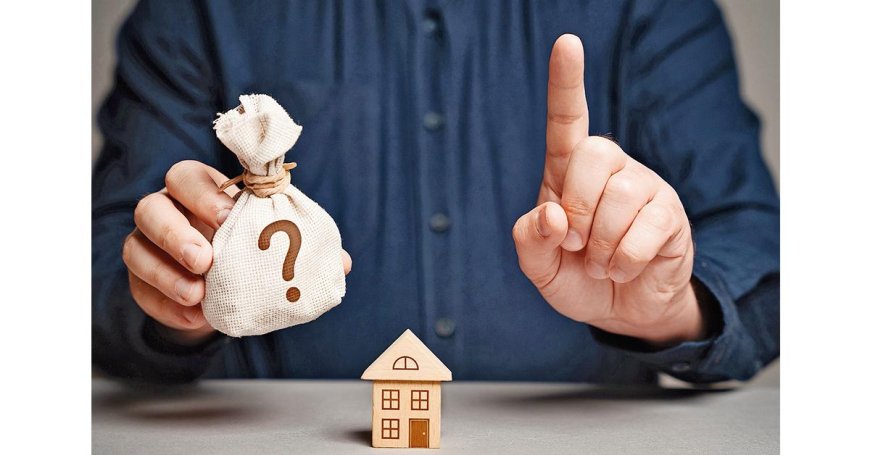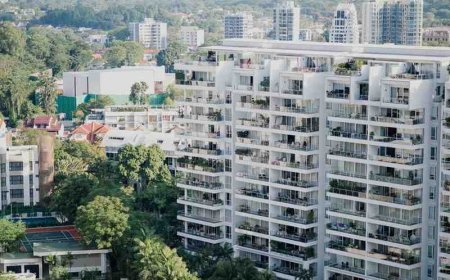Steps to flipping a house for profit
Discover a step-by-step guide to flipping a house for profit. Learn how to find the right property, budget wisely, renovate strategically, and sell smartly to maximize returns in the real estate market.

Flipping houses has become one of the most popular real estate investment strategies for those looking to make fast profits. But it's not just about buying a house, fixing it up, and selling it — there’s a clear process that, when followed correctly, can result in a profitable venture. Here are the essential steps to flipping a house for profit.
1. Understand the Market
Before jumping into house flipping, it’s crucial to study your target real estate market. Research property values, neighborhood trends, average time on the market, and local economic factors. This knowledge helps you choose a location where property values are rising and the demand for housing is high.
Focus on:
-
Neighborhood safety and appeal
-
School district quality
-
Access to transportation, shops, and amenities
-
Past sale prices and rental demand
An area with solid growth indicators increases your chances of flipping a house for a good return.
2. Set a Realistic Budget
Budgeting is one of the most critical components of flipping a house. Make sure your budget includes:
-
Purchase price
-
Renovation costs
-
Holding costs (utilities, insurance, property taxes)
-
Selling costs (agent commissions, closing fees)
-
A contingency buffer (10–20%)
Failing to budget accurately can eat away your profit. Use conservative estimates and always prepare for unexpected costs.
3. Secure Financing
There are several ways to finance a house flip:
-
Cash
-
Hard money loans
-
Private investors
-
Home equity loans
Each has its pros and cons. Cash offers speed and no interest, while hard money loans are quicker but come with high rates. Choose a financing option that aligns with your financial situation and flip timeline.
4. Find the Right Property
Look for a house priced below market value — this is where your profit potential lies. Common sources for finding a flip-worthy home include:
-
Foreclosures
-
Short sales
-
Auctions
-
Off-market deals
-
Distressed properties
The ideal property needs mostly cosmetic upgrades (paint, floors, fixtures) instead of major structural repairs, unless you have the budget and experience to handle more extensive renovations.
5. Perform a Thorough Inspection
Always hire a professional inspector before committing to the purchase. The inspection will reveal issues with the roof, foundation, electrical, plumbing, and more. Knowing the true condition of the property allows you to adjust your budget and avoid unpleasant surprises later.
6. Develop a Renovation Plan
Plan out every detail of the renovation before you begin. Your plan should include:
-
Timeline and phases of work
-
Scope of repairs
-
Design and style choices
-
Contractor selection
Focus on upgrades that add the most value, such as:
-
Kitchen and bathroom remodels
-
Fresh paint
-
New flooring
-
Improved lighting
-
Curb appeal
Avoid over-customizing. Keep the design neutral and appealing to a broad market.
7. Hire the Right Team
Even if you’re handy, flipping a house often requires a team. This could include:
-
General contractors
-
Electricians and plumbers
-
Painters
-
Landscapers
-
Real estate agents
Vet your team carefully. Check reviews, ask for references, and verify licenses and insurance. Reliable contractors can mean the difference between profit and loss.
8. Manage the Project Closely
Stay involved in every step of the renovation process. Visit the site frequently to monitor progress and keep the project on schedule and within budget.
Use project management tools or a simple spreadsheet to:
-
Track expenses
-
Schedule tasks
-
Manage contractor payments
-
Note material deliveries
Staying organized helps prevent delays and cost overruns.
9. Stage and List the Property
Once the renovations are complete, stage the home to highlight its features and create a welcoming atmosphere. Good staging can increase perceived value and help sell the property faster.
Hire a professional photographer to take high-quality listing photos, and work with an experienced real estate agent who knows the local market and can help price and market the home effectively.
10. Sell Smart
Timing is important. Selling during peak seasons (typically spring and summer) can help you get top dollar. Review all offers carefully and consider not just the highest bid, but also the buyer’s financing strength and timeline.
Don’t rush the sale — ensure you’re getting a price that reflects the investment and effort you’ve made.
Final Thoughts
Flipping a house for profit isn’t just about making a property look pretty. It involves smart planning, careful budgeting, and effective execution. When done right, it can be a highly rewarding venture, both financially and personally.
Start small, learn from each flip, and continuously refine your process. With experience, flipping houses can become a sustainable path to wealth through real estate.
Important Links
How to Buy a Condo in Singapore as a Foreigner
Understanding the Loan to Value (LTV) Limit in Singapore Real Estate
What Is Option to Purchase in Singapore
Resale Levy for Second-Time HDB Buyer: What You Must Know in 2025
Singapore Freehold vs Leasehold Property Value
Boulevard Coast Jalan Loyang Besar EC
Boulevard Coast Jalan Loyang Besar EC




































